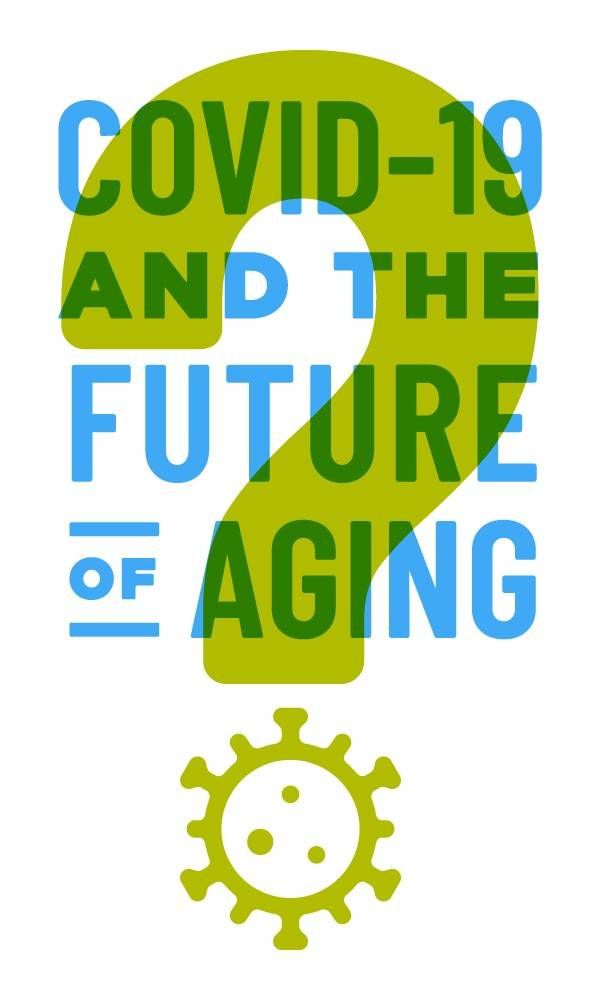COVID-19 and the Future of Aging: Intergenerational Connections
The opportunities ahead for collaboration between older and younger Americans
Editor’s note: This article is the fifth in a weekly joint series on COVID-19 and the Future of Aging from the Milken Institute Center for the Future of Aging and Next Avenue. The articles are Q and As with thought leaders in fields ranging from health care to retirement planning to work to intergenerational relationships.

Milken Institute Center for the Future of Aging: The pandemic spread the isolation and loneliness that many older adults regularly experience to people of all ages. Could this potentially increase awareness and lead to more opportunities for connection and collaboration between the generations?

Trent Stamp: Absolutely. A less-cited fact about loneliness is that teens experience feelings of isolation as much as older adults do, and this was true even before the pandemic. But since we usually think of this loneliness as only applicable to older adults, that connection between generations hadn't led to as much common ground as we find ourselves on now.
Today, with so many of us isolated, we all know what it feels like — and we feel a greater desire to combat it.
"We can't rely on ad-hoc ideas to create a more intergenerationally connected society."
It's going to take work to sustain this conversation and facilitate new intergenerational opportunities.
Many organizations and individuals came together at the beginning of this crisis to reach out to homebound older adults, write letters to residents at care homes and go grocery shopping for those who were vulnerable. This shows that we have a primal desire to connect and help.
But as the initial urgency gave way to the angst and malaise many feel now, some of those efforts have fallen by the wayside. We can't rely on ad-hoc ideas to create a more intergenerationally connected society; we need to build it into the very foundations of our communities.
We can capitalize on our collective experience of isolation as we think about the future.
At The Eisner Foundation, we've been supporting research and toolkits to encourage the creation of more intergenerational shared spaces, which are incredible assets to communities when we can physically gather. Organizations are transitioning to remote programming and finding opportunities to engage a broader range of people in greater numbers that will continue after in-person programming resumes.
Our Commitment to Covering the Coronavirus
We are committed to reliable reporting on the risks of the coronavirus and steps you can take to benefit you, your loved ones and others in your community.
Read Next Avenue's Coronavirus Coverage
I really do believe that we can come out of this stronger and more connected if we're willing to rethink how we engage with each other.
Are there particular examples of new projects or initiatives developed during the pandemic focused on intergenerational connection that should be highlighted and emulated?
At the Motion Picture & Television Fund (MPTF), the staff had already been working on open-source Call Hub software to facilitate their phone outreach program and had done pilots with other organizations like L.A. Works.
When older adults began sheltering at home, many more organizations began similar phone outreach to their constituents, often using younger volunteers.
MPTF is now exploring additional collaborations and opportunities to make this program available to more organizations working to combat social isolation.
When we're on the other side of this, whatever that looks like, the need for friendly outreach will not disappear. We need to continue expanding programs that reduce social isolation.
The Koreatown Youth and Community Center (KYCC) rolled this kind of outreach effort into a student journalism program that was about to launch when the pandemic hit. Instead of having students go out into their community to connect with elders, they began calling the older adults in KYCC's low-income housing program to identify their immediate needs and to begin relationships. Over several months, the students talked regularly with the elders and documented the experiences in writing, audio, photography and video.
They're coming away with a deeper understanding of what it has meant to be older during this time.
I would love to see more programs develop student writing and creative skills through intergenerational connections.
What impacts from COVID-19 do you foresee for philanthropic institutions committed to supporting healthy aging in the years ahead?
I worry about some foundations understandably getting distracted from their strategic plans during this time.
Aging was already a difficult sell among funders before the pandemic. We risk endangering an already vulnerable and under-supported community by diverting resources to immediate impact funds, rather than to aging.
We need new funders, corporations, and individuals to expand the pool —because as with all disasters, some supporters will be looking in other directions.
This is especially true of individual donors. People rarely dip into their savings to make a charitable gift. So if you give to something new, it usually means you aren't giving to what you gave to last year.
If you were one of the few folks who cared about aging issues and now are funding something that came about this year, whether related to COVID or to social unrest, you aren't going to find additional dollars for the aging. It's just the way it has always worked philanthropically.
That said, this crisis has increased awareness of social isolation across our society, and philanthropy is no exception.
Back in April, we responded by establishing a rapid response grant program to make sure older adults did not become isolated and increasingly vulnerable to the associated health challenges, and many other funders took similar action. Organizations created new programs and scaled up established ones, creating more opportunity to prove how effective their efforts are.
I hope that as we reflect on this time and look to the future, the philanthropic community will consider aging issues with the attention they deserve — and look at intergenerational efforts as effective tools to address the challenges they seek to solve.


